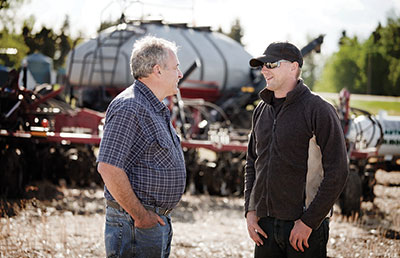Are you Ready for the New Lease Accounting Rules

The accounting profession periodically updates their accounting standards. One of updates that will go into effect in 2020 for most farmers will change how y0u account for operating leases. If you prepare financial statements (or have them done for the bank), you currently expense all operating leases and simply show a footnote to the financial statements indicating the future amount of minimum lease payments per the lease agreement. None of the future payments show up on your balance sheet.
For example, assume you lease a combine for 4 annual payments of $75,000. On your income statement, you simply deduct the $75,000 as an expense and if you prepare financial statements for bankers or others, you let the reader know that you will continue to pay $75,000 each until the lease terminates.
Under the new standards, you will now be required to capitalize these payments on a net present value basis as both and asset and a liability. Using our example above, when the farmer entered into the lease, they would be required to capitalize an asset for around $275,000 (present value of 4 payments at $75,000). Each year, they would expense approximately the same amount, however, their balance sheet would now be shown on a gross up basis.
The above example is for equipment leases. Similar rules can apply to your cash rented farm ground too. If you have been farming this ground for several years and it is expected that you will continue to farm this ground, the amount posted to your balance sheet can be substantial. For example, assume you pay $750,000 each year for cash rent. This is ground that has been farmed for several years and most of it is paid to related parties. You may be required to capitalize 20 or more years of cash rent to your balance sheet. If your current balance sheet shows $5 million of assets and $3 million of equity; the new standard will increase assets by almost three times, yet equity will remain exactly the same.
You may say if the income state does not change, how does this affect me. The main issue is that many covenants that you have with banks have certain net-worth to debt ratios (or related one) and by adding all of this “debt” to the balance sheet, you may now be in danger or violating your covenants.
If you have a fair amount of operating leases, it is important to discuss this with your CPA and your banker to make sure you are ready for when the rules go into effect.
Although the rules are not applicable until 2020, you will need to get prepared over the next year or so to implement the new rules. Don’t wait to long.
Paul Neiffer is a certified public accountant and business advisor specializing in income taxation, accounting services, and succession planning for farmers and agribusiness processors. Paul is a principal with CliftonLarsonAllen in Walla Walla, Washington, as well as a regular speaker at national conferences and contributor at agweb.com. Raised on a farm in central Washington, he has been immersed in the ag industry his entire life, including the last 30 years professionally. Paul and his wife purchase an 180 acre ranch in 2016 and enjoy keeping it full of animals.

Hi Paul.
How are crop share leases treated under these new rules?